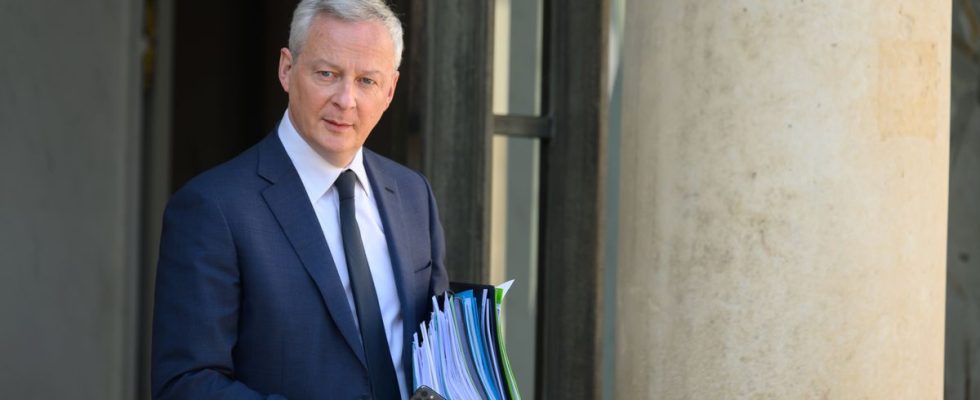The government will freeze an additional 1% of the appropriations of its 2023 budget to maintain its trajectory in terms of public finances, announced Tuesday the entourage of Elisabeth Borne and the Minister of the Economy Bruno Le Maire.
The Prime Minister validated, during a meeting in Matignon on Tuesday afternoon, a proposal from her Minister of the Economy which consists of “an increase in the credits placed in reserve – “surgel” – in the 2023 budget, up to of 1% of the credits provided for in the finance law (excluding civil servants’ salaries), “said Elisabeth Borne’s entourage.
“An additional precautionary measure”
“I proposed to the Prime Minister to take an additional precautionary measure to meet our public finance commitments in 2023,” said Bruno Le Maire.
This 1% freeze “applies to all state credits except salaries. They represent 1.8 billion euros and this 1.8 billion euros is added to the 5% of State credits which had already been frozen for a total amount of frozen credits of 10 billion euros”, added the minister.
This measure “must guarantee that we will meet our public finance objectives in 2023, that is to say return to below 5% deficit”, he argued.
Hope for a better grade
The government is awaiting the rating of its debt in early June by the financial agency Standard and Poor’s.
At the end of April, the Fitch agency lowered the French rating, citing the strong social tensions at work around the pension reform. Bruno Le Maire then assured that he would “pass structural reforms”.
A growing public deficit
After reaching 4.7% in 2022, the public deficit should rise slightly this year (4.9%) before gradually declining from 2024 to reach 2.7% in 2027, in the European nails, according to the government road for the next few years and presented in April.
Deleveraging should also experience a boost, with public debt representing 108.3% of GDP in 2027, but still far from the European target of 60%. It was at 111.6% of GDP at the end of 2022.

